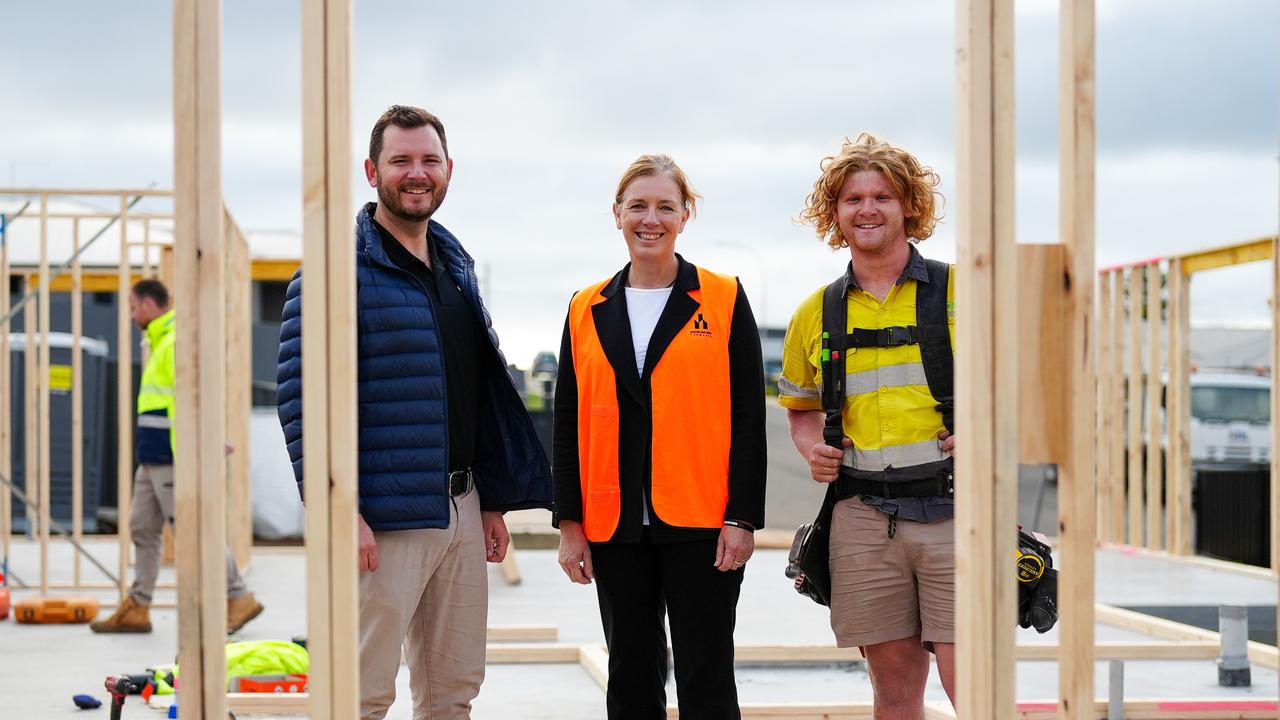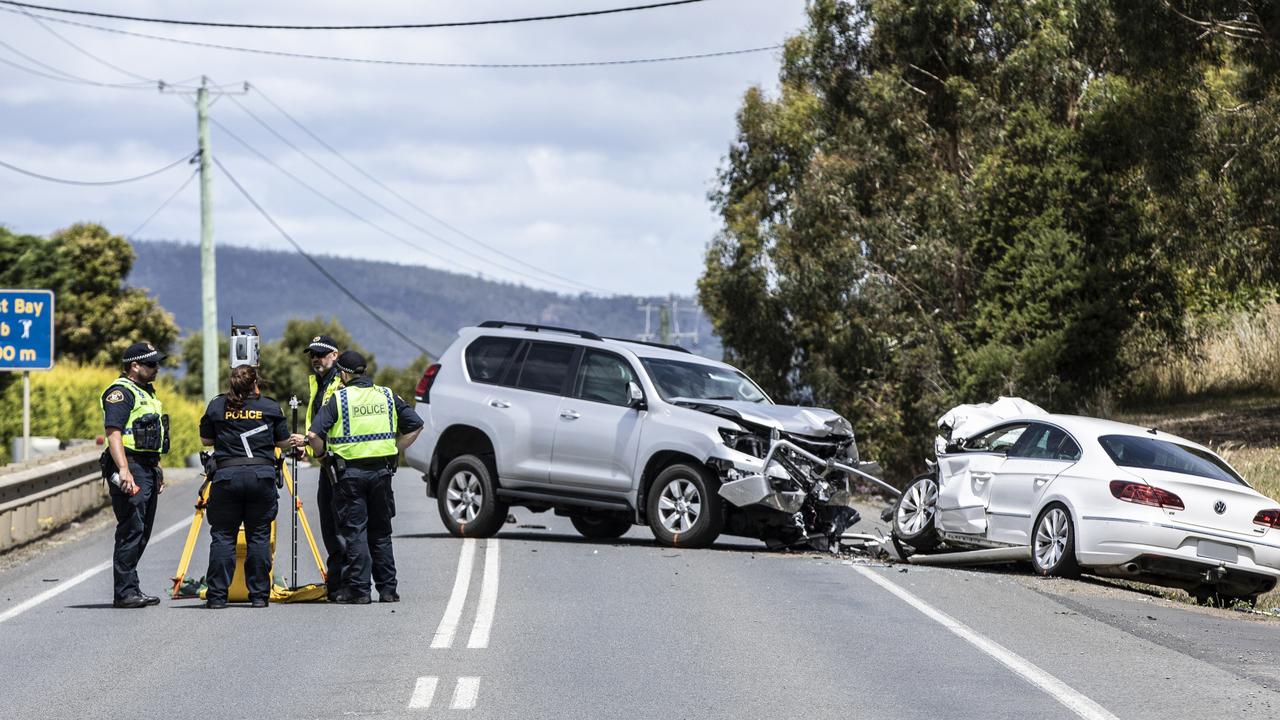Housing experts predict what Tasmania’s future will look like to keep up with demand
Housing experts say the dwellings of the future will be smaller and closer to shops and services, with the bulk of development in the south — but there’s some short term pain to get through first.
Future Tasmania
Don't miss out on the headlines from Future Tasmania. Followed categories will be added to My News.
MODULAR homes, infill housing and medium and high density developments – these are some of the key trends experts have predicted will define Tasmania’s housing landscape in the coming decades.
They say the dwellings of the future will be smaller and likely located closer to services and activity hubs, with the bulk of development to be concentrated in the south of the state.
Tasmania’s population has increased by about 47,000 over the last five years and the federal government’s Centre for Population has projected that it could jump from 568,000 today to 647,000 by 2033.
Greater Hobart alone is tipped to experience an influx of 47,000 people in the next decade, bringing its total population to 298,000.
Dr Maria Yanotti, a housing economist at the University of Tasmania, said independent analysis of the Hobart housing market suggested demand would exceed supply until 2025 “before gradually improving”.

“Unfortunately, we expect a shortfall of an additional 3000 homes in Hobart over the next five years,” she said.
Dr Yanotti said Tasmania’s existing housing stock was “dominated” by detached dwellings, many of which were located too far away from amenities and services and were “old, poorly insulated and too large (3-4 bedrooms) for most households”.
She said research had shown that many households preferred medium density housing, insofar as it had good access to facilities and recreational space, and that demand for the 20th century model of car-dependent suburbs was in decline and many people moved into this type of housing “out of necessity rather than choice”.
“We should aspire to [develop] ‘15-minute cities’, where shops and services can be accessed in 15 minutes on foot or active transport and employment in 15 minutes by car or public transport,” she said.
“People with uncertain, unaffordable, and unsafe housing will find it harder to attain higher educational levels, better health outcomes, and retain jobs. This obviously has important implications for productivity and regional development.”

Housing pressure is not just an issue in the capital, with a lack of supply putting a handbrake on key industries in Tasmania’s regions – such as agriculture, tourism and mining – due to the fact that workers can’t find a place to live.
The state government has pledged to build 10,000 new social and affordable homes by 2032 but Professor Richard Eccleston, the director of the Tasmanian Policy Exchange at the University of Tasmania, said there was “clear agreement” in the housing sector that the state needed to increase supply from “a little over” 3000 new homes a year to about 5000.
“Clearly the Tasmanian government’s commitment to fund the construction of 10,000 new homes over the next 10 years is important but they may need to build more homes than planned over the next few years given the acute need and the impact of higher interest rates on private construction,” he said.
Master Builders Tasmania CEO, Matthew Pollock, said the state had logged record new housing starts in the last two years, with 2021 being the first year they exceeded 4000.
He estimated that Tasmania would need to build “in the vicinity” of about 3100 homes on average per year for the next decade in order to keep pace with demand.

Mr Pollock said the composition of housing in the state would transform in the future as the population grew, shifting towards more modular and prefabricated homes and off-site construction.
“It means that high density and medium density are likely to make up a greater share of the housing stock. Or at least [more than] has traditionally been the case in Hobart,” he said.
Property Council Tasmania executive director Rebecca Ellston said building codes needed to be improved to ensure that dwellings were future-proofed to meet occupants’ expectations of “resilience, comfort, sustainability and affordability”.
“Homes built today will need to withstand future climatic conditions and should be designed to ensure the comfort of occupants throughout harsher weather conditions,” she said.
“It is important that Tasmania avoids lagging behind the rest of Australia by postponing the adoption of higher stringency provisions for energy efficiency”.
Pattie Chugg, the CEO of Shelter Tasmania, said she wanted to see social and affordable housing integrated into the state’s planning system and both urban and rural landscapes. She is calling for 10 per cent of all rental homes in Tasmania to be made up of social and affordable housing. Currently it is at 6.2 per cent.
There are today more than 4500 people on the state’s social housing waiting list.
“We need to continue our investment in our valuable network of shelters and specialist support services, who see over 7000 people a year and play a critical role in supporting people experiencing homelessness,” Ms Chugg said.
“But the system is full, and over 43 requests go unassisted each day, with over 30 per cent involving family and domestic violence.
“Homelessness services are at capacity and demand continues to grow, but moving people on from crisis to long-term housing is becoming more difficult due to the current housing crisis.”
Ms Chugg said the homes of the future needed to have universal design features to cater for people of all abilities, especially as the population aged.
A spokesperson for Homes Tasmania, the state’s statutory housing authority, said that infill and medium density residential development of townhouses and units was likely to be “more common” in the future.
“In general, the average household size in Tasmania is decreasing although there will still be a need for some larger houses, [such as] 4-5-bedroom homes to accommodate larger families, including inter-generations,” they said.




